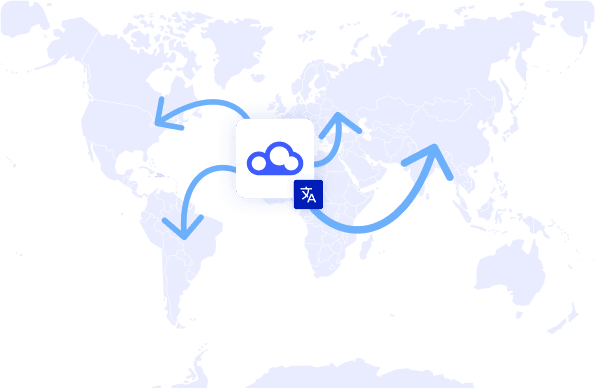In today's data-driven world, organizations recognize the critical role of data governance in managing and leveraging their data effectively. Implementing data governance is essential to ensure data quality, regulatory compliance, and data-driven decision-making. By establishing a solid data governance framework, organizations can unlock the full potential of their data assets and drive business success.
This article outlines eight crucial steps to successfully implement data governance in your organization. From assessing your organization's readiness to continuously improving your data governance program, each step is vital in establishing a robust and sustainable data governance framework.
Keep reading to find out more valuable insights on this subject.
The need for data governance in your company
The need for data governance in your company stems from the increasing volume, variety, and velocity of data generated daily.
Without a clear framework, data can quickly become inconsistent, inaccurate, or inaccessible. This can lead to poor decision-making, compliance risks, and missed opportunities. Data governance provides the structure and accountability needed to ensure data is accurate, secure, and used responsibly across the organization.
It defines roles, responsibilities, policies, and processes that guide how data is handled, making it easier to maintain trust in your data assets. Whether aiming to meet regulatory requirements, improve operational efficiency, or enable advanced analytics, a strong data governance program is the foundation for achieving those goals.
1. Assess your organization's readiness
The first step in implementing data governance is to assess your organization's readiness for the journey.
- Conduct a thorough assessment of your current data management practices, processes, and culture
- Identify any gaps, challenges, or areas for improvement
This assessment will help you understand the strengths and weaknesses of your organization's data governance maturity level.
It will also provide insights into the readiness of stakeholders, including leadership buy-in, availability of resources, and the willingness of employees to embrace data governance initiatives. By understanding your organization's readiness, you can tailor your data governance implementation plan to address specific needs and challenges effectively.
2. Define data governance objectives & scope
Clearly defining the objectives and scope of your data governance initiative is crucial for its success.
- Identify the specific goals you want to achieve through data governance, such as improving data quality, enhancing compliance, or optimizing data utilization
- Define the scope by identifying the key data assets, systems, and processes that will be included in your data governance framework
- By setting clear objectives and scope, you provide a roadmap for your data governance implementation and ensure alignment with organizational priorities.
3. Establish a data governance framework
Developing a robust data governance framework is essential to providing structure and guidelines for your data governance initiative. Establish a governance structure that defines roles, responsibilities, and decision-making processes. This includes appointing data stewards and owners and establishing a data governance council or committee.
Define data governance policies, procedures, and standards to ensure consistency and alignment across the organization. The framework is a guiding document that outlines how data governance will be implemented, communicated, and enforced throughout the organization.
4. Build a data dictionary & metadata management
Building a comprehensive data dictionary and implementing metadata management practices are foundational components of effective data governance. A data dictionary provides a centralized repository of data definitions, business rules, and metadata that describe your organization's data assets. It serves as a reference for data users, ensuring a common understanding of data elements and their meanings.
Metadata management involves capturing, organizing, and maintaining metadata, including data lineage, data sources, and data transformations.
These practices enable better data understanding, discovery, and governance enforcement. By building a robust data dictionary and implementing metadata management, you establish a strong foundation for your data governance initiative.
5. Implement data quality management
Implementing data quality management is a critical step in your data governance journey. Data quality directly impacts the accuracy, reliability, and usefulness of your data.
Establish data quality standards, metrics, and processes to assess, monitor, and improve the quality of your data. This includes identifying data quality dimensions that are relevant to your organization, such as completeness, accuracy, consistency, and timeliness.
Data that speaks your language
Multilingual AI: Breaking language barriers for effortless data collaboration
DataGalaxy’s commitment to making data knowledge accessible drives our innovation. By integrating advanced translation and multilingual search capabilities into our Data Knowledge Catalog, we’re breaking down barriers in data understanding and use, fostering a truly global, data-driven culture.
Implement data profiling techniques to identify data anomalies, data cleansing procedures to rectify errors, and data validation mechanisms to ensure data meets predefined quality criteria.
Measure and track data quality metrics regularly to identify areas for improvement and take corrective actions. By prioritizing data quality management within your data governance framework, you can enhance the integrity and trustworthiness of your data assets.
6. Establish data security & privacy controls
Data security and privacy are paramount in today's data-driven landscape. Establishing robust data security and privacy controls is essential within your data governance implementation.
Define access controls, authentication, and encryption to protect data from unauthorized access, breaches, and misuse. Implement data classification processes to categorize data based on its sensitivity and define appropriate security measures accordingly.
Develop privacy policies and procedures to comply with applicable data protection regulations and ensure personal data's lawful and ethical use. Regularly audit and monitor data security measures to identify vulnerabilities and take proactive steps to address them.
By prioritizing data security and privacy within your data governance framework, you safeguard your data assets and maintain the trust of your stakeholders.
7. Define data governance metrics & key performance indicators (KPIs)
Defining data governance metrics and key performance indicators (KPIs) is crucial for measuring the success of your data governance implementation. Determine the relevant metrics and KPIs that align with your data governance objectives. This could include metrics related to data quality, compliance levels, data access and usage, and user satisfaction.
Monitor and track these metrics regularly to assess the effectiveness of your data governance practices and identify areas for improvement. Use these metrics to demonstrate the value and impact of data governance to stakeholders and make informed decisions to drive continuous improvement.
By defining and measuring data governance metrics and KPIs, you establish a framework for monitoring progress, evaluating success, and ensuring the ongoing effectiveness of your data governance initiative.
8. Continuously evolving & improving your data governance program
Data governance is an ongoing process. Continuously review, refine, and improve your data governance program based on feedback, evolving business needs, and regulatory changes. Adapt your data governance framework to accommodate new data sources, technologies, and business requirements.
Encourage a culture of data governance and provide training and support to ensure ongoing compliance and effectiveness. By embracing a culture of continuous improvement, you can ensure that your data governance program remains relevant and impactful in the ever-changing data landscape.
By following these essential steps, you can successfully implement data governance in your organization, leading to improved data quality, compliance, and data-driven decision-making. Implementing data governance is a transformative journey that lays the foundation for effective data management and maximizes the value of your data assets.
Fueling smarter decisions for
200+ industry powerhouses.










